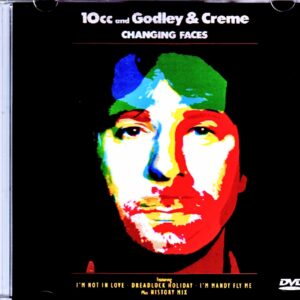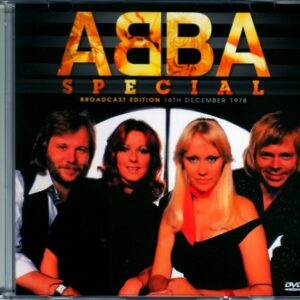Description
A historical masterpiece… No, it’s humanity’s greatest masterpiece created by rock culture, “Madness.” A masterpiece documentary that goes behind the scenes has been decided to be released. This work includes the popular British program “CLASSIC ALBUMS”. This program will highlight one of the greatest albums in rock history, and will unravel the scene by collecting comments from people who knew the era, including members, producers, managers, journalists, etc. Since the first edition in 1997 (by the way, it was Paul Simon’s “Graceland”), we have featured 45 masterpieces (53 if you include the Dutch edition), and PINK FLOYD’s “Madness” is… It was the 22nd time. This series was broadcast on television in the UK and was also commercialized on DVD. This work is a copy of the official product. . . . Not. A version of the program “ROCK THE CLASSIC” aired by a certain satellite broadcasting station in 2006. This is the Japan Broadcasting version with the program’s own subtitles and bonus footage added. If you have seen the official DVD, you probably know that this program is different from the average documentary. Not only is the composition focused on one album, but the content is overwhelmingly dense. The “Madness” edition is explained in detail, including the historical background and goals leading up to production, the status of the composition sessions, the world of lyrics, recording, editing, and even the circumstances that led to it becoming a worldwide hit. Moreover, they are all very interesting. Even though it is a very maniacal story, it is easy to understand even for a layman and is made into entertainment. For example, composing. Rick Wright reveals that the piano part on ‘Breathe’ was inspired by Miles Davis’ ‘Kind Of Blue’. There, Rick himself compares his playing, saying, “Normally, this is how the part that goes from G to E would be played,” and “But it’s Miles, so it would be played this way.” Even more intense is the mix work explained by engineer Alan Parsons himself. The artist plays a real multitrack while fiddling with the knobs on the mix console to reproduce the process. “This is what it looks like when it’s just Dave (Gilmour’s main vocalist),” “This is what it looks like when the harmonies are added,” “This is what it looks like when you add the frequency conversion effect,” and “And this is what it looks like when the whole band…” he explained while demonstrating. If Gilmore’s authentic a cappella take is shocking, it’s also interesting to see it gradually change to a familiar sound. Furthermore, the current Gilmore and Roger perform live, and it is amazing how it synchronizes with the album. You can experience how that sound world is assembled through “sound” that goes beyond logic. Actually, these mix explanations are a highlight of the program throughout the series, but the “Madness” episode is even more so than usual. Particularly amazing is the sound effects section. Gilmour himself looks back at the time when he evolved the simple sounds of the synths into the sound effects used on the album, and with the help of engineers, sublimated them into music. “The sound of the strings being played against the microphone stand, the footsteps, the heartbeat, the Doppler effect… it was difficult just to make sure the bell would ring at the perfect time.” This is a normal comment, but I went a step further and said, “Multi-tracking”・Check the position of the tape and match it with the original sound on the 6mm tape.” “I rely on a stopwatch to determine the timing position,” he explains in detail. We’ve casually listened to the finished album as a result, and we can’t help but wonder how miraculous it is to see so many sound effects come together so perfectly to form a song. It will show you once again how amazing it is. There’s also Clare Tory’s legendary scat performance on “The Great Gig in the Sky,” a blues version of “Money” played by composer Roger, and the untold story behind Prism’s artwork. . No matter how much you like a band, music documentaries tend to drag on and on, but with this one, the hour passes by without a single second of boredom. At the end of the documentary, “Time” from “PULSE” is added exclusively by Nippon Broadcasting. This work ends with the feeling that a masterpiece that has gone through various stages has finally arrived on stage. “Madness” transcends the framework of rock and is a masterpiece of 20th century music. This is a masterpiece of a music documentary that reveals the behind-the-scenes details. It’s such a wonderful piece that I even feel grateful that this program was produced during Rick’s lifetime. “Rock The Classic” Japanese Broadcast 2006 Broadcast Date: 5th May 2006 1. Intro 2. Speak To Me/Us And Them/Money 3. Brain Damage/Eclipse 4. Syd Barrett 5. Set The Controls for the Heart of the Sun 6 Echoes 7. Breathe 8. On The Run 9. Time 10. The Great Gig In The Sky 11. Artworks/Promotion 12. Money 13. The Violent Sequence (from Zabriskie Point) 14. Us and Them 15. Voices Recordings 16. Brain Damage 17. Eclipse 18. Time (from “Pulse”) Live at Earls Court, London 20th October 1994 PRO-SHOT COLOR NTSC Approx.56min.







Reviews
There are no reviews yet.